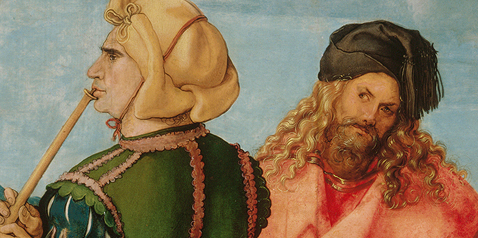
ALBRECHT DÜRER
Dürer was born in Nuremberg on 21 May 1471. The son of a goldsmith, he became an apprentice in his father’s workshop, before becoming a pupil of the Nuremberg painter and draughtsman Michael Wolgemut in 1486. After finishing his training there, Dürer set off in 1489 on the traditional journeyman’s travels. In his case they were quite extensive, lasting four years and taking him to Colmar, Basel and Strasbourg. Later, in 1494/95 and 1505/06, he travelled twice to Italy, where he mainly stayed in Venice.
Following his travels he concentrated on copper engravings and woodcuts, the best known being his famous Apocalypse series (1498), followed by the Large Passion (1496 – 1511) and the Life of the Virgin (1502 – 1511). Dürer’s so-called ‘master prints’, Knight, Death and Devil, Melencholia and St Jerome in his Study (1513/14), are among the outstanding works of European graphic art. He also painted a series of altarpieces and self-portraits, which bear unmistakable witness to his self-confidence as an artist. From 1512 he worked on commissions from Emperor Maximilian I.
In 1520/21 Dürer went on a trip to the Netherlands. After his return he composed a number of lengthy treatises, including Underweysung der Messung (‘Instructions on Measurement’) (1525), a work on fortification (1527) and a further four books on human proportion (published posthumously in 1528). He died in Nuremberg on 6 April 1528.


